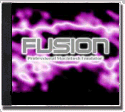|
Macintosh Emulator |
 Fusion Amiga |
||
|
FAKTEN |
|||
|
New Version 3.1
|
|||
|
FUSION FACTS FUSION supports Apple's virtual memory when using an Amiga that has an MMU present (68030/68040/68060). The Macintosh MMU usage is so complex that rather than patching the existing resources, Microcode Solutions wrote all new routines, which also allows the 68060 to support virtual memory (which is not possible on any real Macintosh). The virtual memory is system friendly, allowing the Amiga more CPU time (which makes programmed I/O devices transfer data quicker). FUSION supports AHI! Microcode Solutions has been working to help test and debug AHI, so that 16 bit audio could be used with the Macintosh emulation. We have succeeded! Using AHI, it is possible that standard Amigas have simulated 16 bit audio (14 bit actual with 16 bit simulation routines). The results are incredible. For those of you who thought that 16 bit audio was only twice as good as 8 bit audio, you're in for a surprise. The only down side of using AHI is that the amount of overhead required by AHI takes about 20% of the speed away from the emulation. We expect this to change with future releases of AHI. Microcode Solutions is also working on supporting AHI's audio input routines, as well as standard parallel port digitizers for Macintosh audio input (note: this support will not be available in the first release of FUSION, but will be available as a free upgrade). The most advanced feature of FUSION is its InterCommunications Port(sm). There is a a virtual link between the Amiga and the Macintosh while the emulation is running. This link allows any programmer to access any function normally available only to Macintosh programmers. One of the built-in uses of the InterCommunications Port (ICP) is the availability of ALL Macintosh volumes on the Amiga side. This includes multi-volume partitions. The devices become AmigaDOS compatible, and no additional handler or filesystem is required. So, it will be possible to use your favorite file copying tool (DirectoryOpus is our particular favorite) to copy, delete, rename, etc. files on any Macintosh partition, and all from the Amiga side. Microcode Solutions will be providing to the public, a complete programmer's package (assembly code only) that will detail the use of the ICP. It will be possible to do some neat things using the ICP, such as playing QuickTime movies on your Amiga's Workbench, using the Macintosh to convert or play the data. Likewise, it would be possible to have an Adobe PhotoShop(TM) plug-in available to an Amiga image processing program. The ICP can put the Macintosh emulation into suspend mode. In this mode, the emulation is put to sleep until it is told to wake up. While in suspend mode, the Amiga regains 100% of the CPU time normally used to run the emulation. By simply pressing SHIFT-LEFT AMIGA-N or SHIFT-LEFT AMIGA-M, the emulation is put into suspend mode. These key combinations will switch Amiga screens to either Workbench (S-LA-N) or the next active screen (S-LA-M). The emulation is awaken by any call to the ICP (such as file transfers, command messages, etc.) or by switching screens to the emulation and just activating the window (by clicking either mouse button). Sample programs (including source code) are provided for launching Macintosh application from your Amiga Workbench. Now you can create icons for your favorite Macintosh program and just double-click them to automatically invoke them! The ICP is bi-directional, so programmers could write Macintosh based programs that used Amiga library functions too. The possibilities of the ICP are endless! Microcode Solutions spent a great deal of time working on video performance. Our efforts have paid off in substantial performance gains over any existing Macintosh emulation! When using a Zorro III Amiga video board (PicassoIV, CV64, CV64/3D, PiccoloSD64, RetinaZ3, etc.), benchmark programs (Speedometer, Snooper, MacBench, etc.) show video performance to exceed ALL 68K based Macintoshes, and exceed nearly all PowerMac machines! While the emulation is running, there is a control window in place that allows on the fly changes to the emulation. These include: ICP control (mounting/dismounting Macintosh volumes for Amiga use & file translation setup), video driver control (QuickDraw acceleration & refresh rate control), device control (remounting of ejected volumes), CPU cache control, emergency shutdown, and an automatic Mac-to-Front screen switch. The control window can be iconified. |
|||
|
Overview
|
|||
|
Minimum Requirements:
Recommended Minimum Configuration:
|
|||
|
Hier gibt es weitere Informationen zu diesen Produkten: |
|||
|
|
|||
|
|
|||


